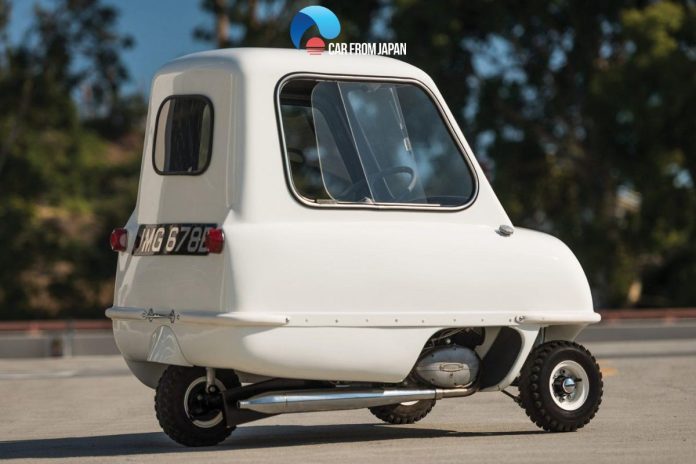We all are fond of speed and wish to be in the shoes of Frank Martin (played by Jason Statham, The Transporter) or Dominic Toretto (played by Vin Diesel, The Fast and the Furious) at least for a day. But, what about driving the slowest car in the world?
“How fast can it go?” – this is what comes into the mind of most people when getting a car for themselves. However, a relaxed drive behind the wheel of a low-power car has its unique benefits.
You will have time to retrospect amid a busy lifestyle. Also, think of better fuel economy, less carbon in the environment, and avoiding the inevitable speeding tickets!
There are a handful of slow automobiles in the market. But, what is the slowest car of the bunch? Let’s find out now!
Contents
What Is The Slowest Car In The World?
The slowest car in the world is the Peel P50, manufactured by Peel Engineering. It’s so slow that it has become a part of history. Holding the Guinness World Record for the smallest car that has been ever made, it also crowns the title of being the slowest.
Can you predict how fast can the this car go? Only 28mph. The speed of the electric vehicle is deliberately limited to that range because Peel’s slogan has always been – almost cheaper than walking.
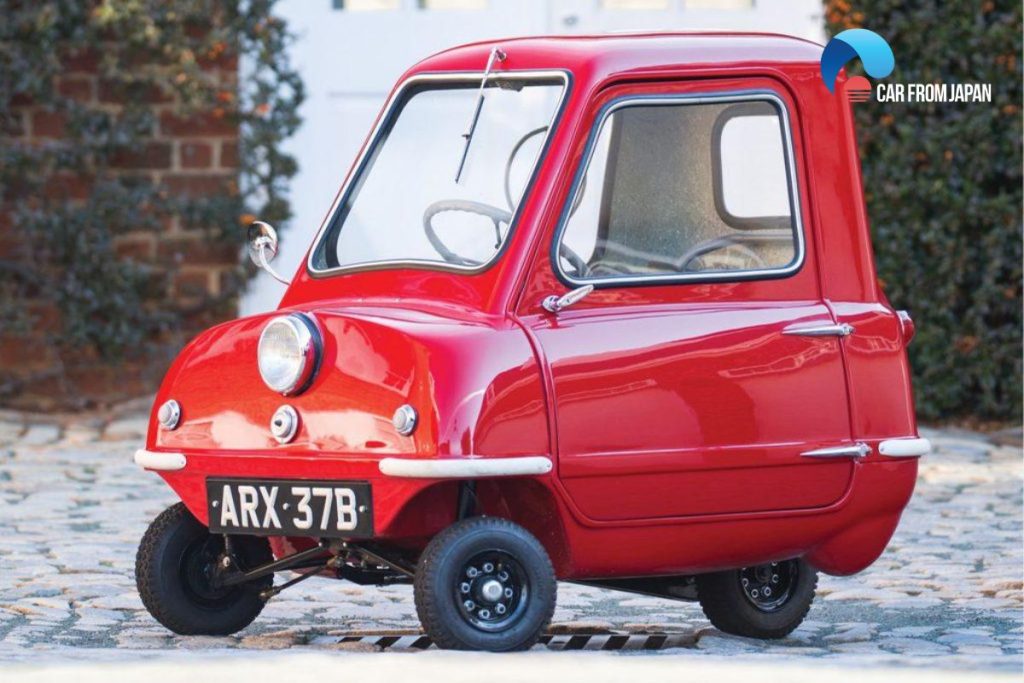
The Specs of Peel P50: The Slowest Car in the World
The Peel P50 came into the market in 1962. With 54 inches in length, the three-wheeler was and still is the world’s smallest car.
The company discontinued it in 1969 but it brought it back into production in 2010. Currently, it manufactures a petrol and an electric version of the car.
The original edition has one door on the left side, a single windscreen wiper, and a headlight. There was no reverse gear but a rear handle to lug the car around by hand when needed. It was easy to tow as the weight was only 130 pounds.
The new version keeps the physical features almost similar but brings changes in the drivetrain, suspension, and steering. It also has a fully-functioning reverse gear.
The top speed of both versions is 28mph. However, the original engine was a 49cc moped unit generating 4.2 hp. The new petrol-run version generates slightly less power, 3.35 hp, with a 49cc four-stroke engine.
It comes with a modern CVT instead of the old one’s three-speed transmission. The EV edition yields the same power with a moped electric motor and gelled-electrolyte batteries.
SEE MORE: Looking for a Small Car? Choose between Honda Fit vs Nissan Tiida
Small Cars – An Unique Experiences of Encountering
First, to summary what we have talked above about the one-and-only P50, here are some fun facts on this slowest production car you have ever encountered:
- The Peel P50 is one of the most well-known microcars in the world, having been inducted into the Guinness Book of World Records as the world’s smallest production automobile and driven by Jeremy Clarkson.
- The initial iteration, debuted in 1962, was powered by a 49cc DKW single-cylinder engine capable of 37 mph (60 km/h) and was touted as being able to carry one passenger and one bag of shopping.
- Peel Engineering Company in the Isle of Man manufactured the Peel P50, as well as the somewhat larger Peel Trident microcar.
- Peel Engineering reintroduced the P50 in 2011, with both petrol and electric versions available.
Alongside with the Peel 50, there are even more interesting small cars you can check out for fun. And just so you know, they are all attached with a historical period of pride and unique specifications.
Brütsch Mopetta
The open-topped Mopetta debuted six years before the P50, inverting the Peel’s configuration to drive two rear wheels while steering with a single front wheel. It was built in Stuttgart by microcar designer Egon Brutsch.
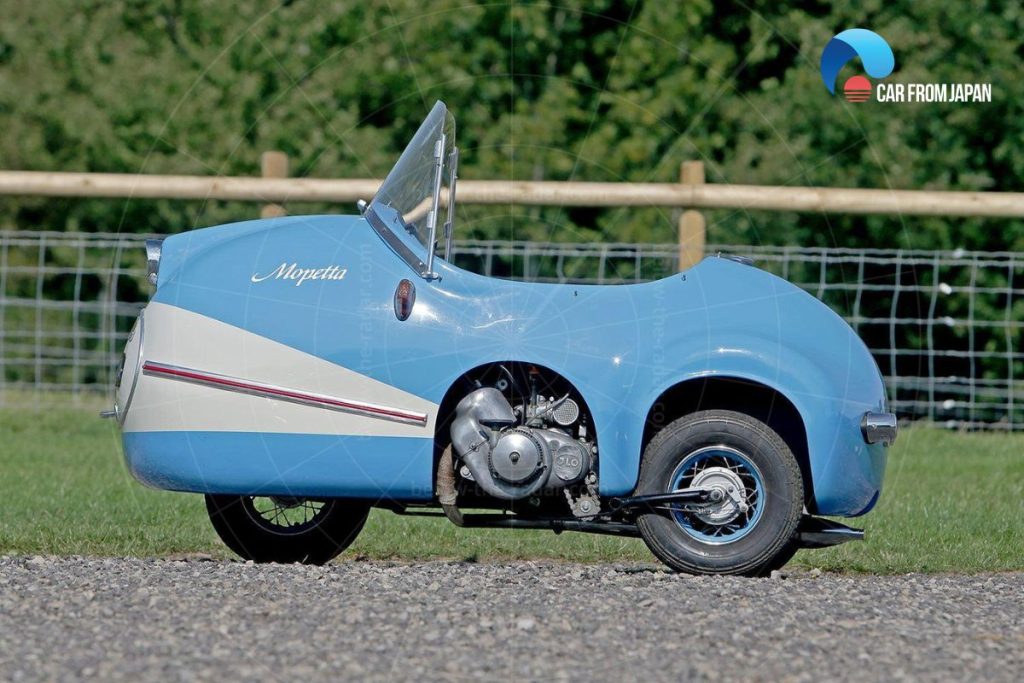
Because of its beautiful style and hen’s teeth rarity, numerous reproductions have been produced, including one by British microcar specialist Andy Carter.
Aixam Coupe
The Aixam Coupe is a two-seater quadricycle ‘carped’ coupe. In the UK, a driver does not need a license to drive it, and children as young as 16 are permitted to do so after completing the new CBT and Moped exam.
It is powered by a 400cc two-cylinder diesel engine with a maximum output of 5.6hp. It can only go 30 mph, making it one of the world’s slowest automobiles.
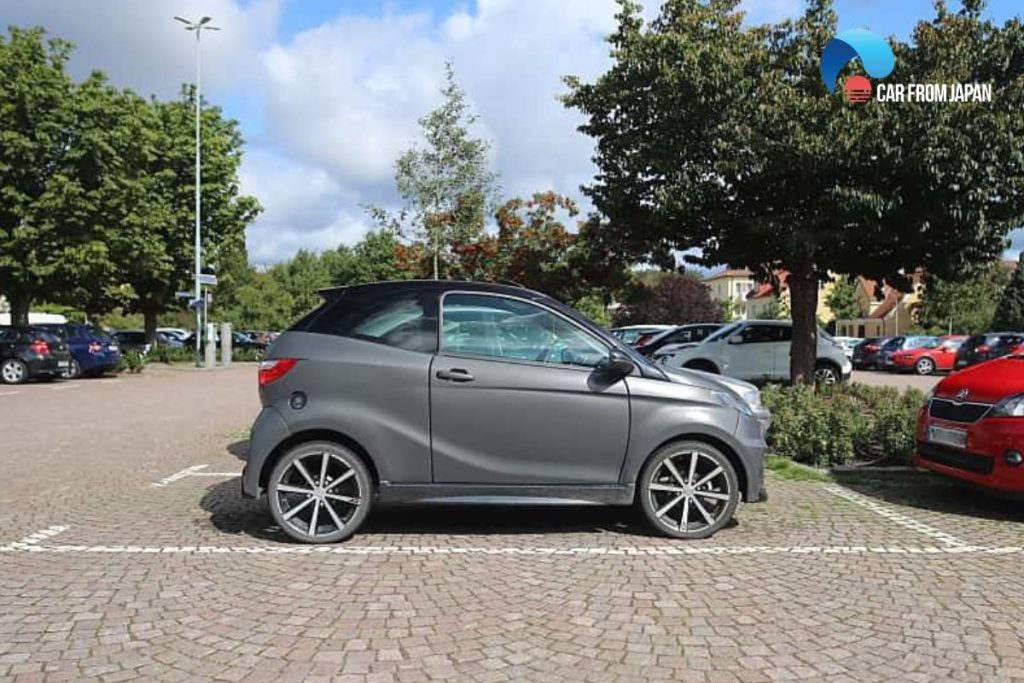
FMR TG500
After being barred from producing aircraft after WWII, Messerschmitt developed a line of three-wheeled Kabinenrollers (‘cabin scooters’) based on the Fend Flitzer handicapped buggy.
FMR’s fast Tg 500 four-wheeler was a 494cc, twin-pot beast with roughly 20bhp that inherited much of the Kabinenrollers’ design. One was auctioned off for more than 300,000 dollars in 2013.

Fuji Cabin
The Fuji Cabin was built in Tokyo between 1955 and 1958.
Though its structure, suspension, brakes, and Cyclops headlamp were comparable to the P50, the Fuji Cabin’s 122cc, 5.5bhp single-pot was rear-mounted. Its two seats were staggered, and its 115in length made it a long-wheelbase leviathan.
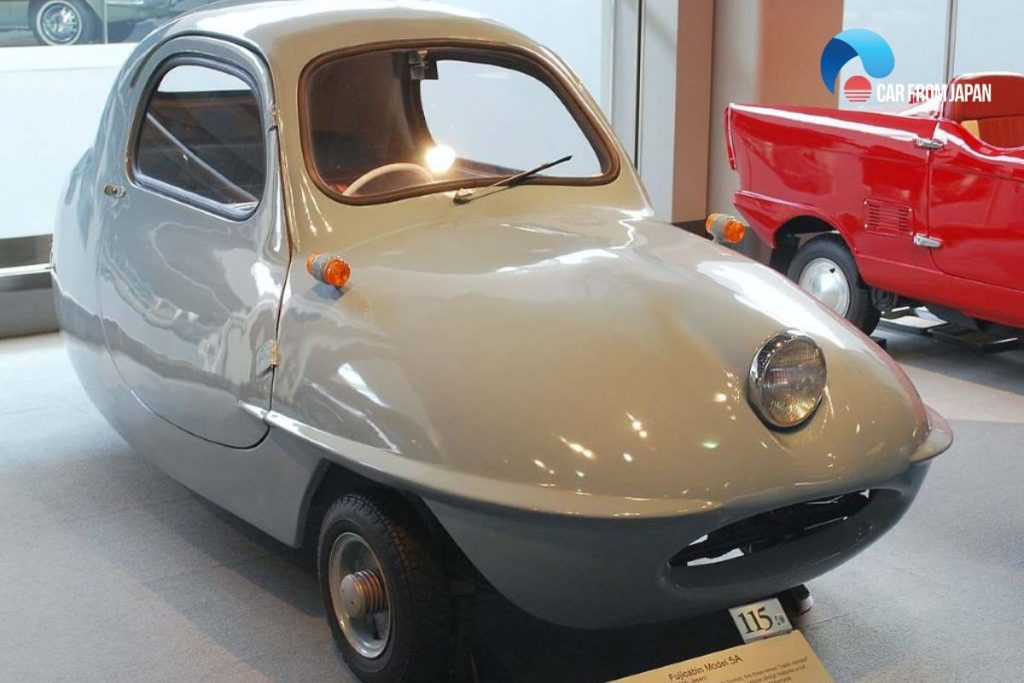
Should You Buy a Peel P50?… Even Just for Fun?
Purchasing the slowest modern car does not seem very practical or useful, especially when it costs almost $16,000. You will get plenty of choices with better amenities and secondhand versions of many mid-range cars.
Want more interesting info on this unique vehicle, check out this video from Top Gear!
Still, the P50 has some major advances over a standard automobile. It offers a surprising 118 mpg (35 mpg for the EV), which makes it cheaper and a better replacement than walking. Also, this is the only car that you can park in your living room!
FAQs on The Slowest Cars Worldwide
What is the world’s slowest car price?
The price of a Peel P50 varies wildly. Original models are extremely rare and can fetch hefty sums at auction, sometimes exceeding $100,000.
What is the slowest electric car ever made?
The Buddy Electric, a small Norwegian city car, has a top speed of 50 km/h (31 mph), making it one of the slowest production EVs ever.
Many other small electric cars, like the G-Wiz, are also notorious for their sluggish performance.
Are there any modern cars that are slower than classic models?
Yes! Some modern ultra-efficient and city-focused cars, like the Renault Twizy (top speed: 28 mph / 45 km/h) or the Citroën Ami (top speed: 28 mph / 45 km/h), are actually slower than many classic cars from decades ago.
They’re designed for urban commuting rather than performance.
Can a car be too slow to be legally driven on highways?
Yes, in many countries, cars must maintain a minimum speed limit on highways.
Vehicles like the G-Wiz (max speed: 50 mph / 80 km/h) or Citroën Ami are too slow for highways in many regions and are restricted to city roads.
Final Words
Overall, the slowest car in the world, like the Peel P50 and other microcars, stand out in their own way in the automotive world. They prove that practicality and novelty can be just as appealing as speed and power.
For more insightful automotive industry knowledge, follow Car From Japan today!

